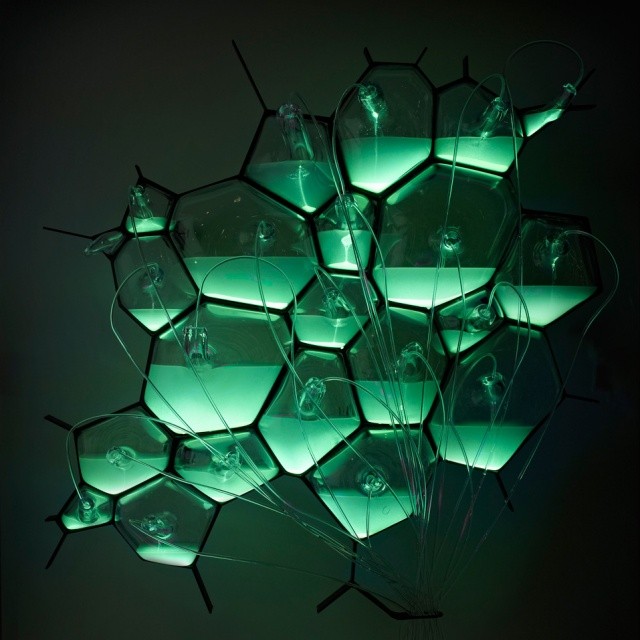
While compact fluorescents and LEDs are certainly playing an important role is lighting systems greener and more energy-efficient, electronic manufacturer Philips are taking the quest for truly green lighting just a little bit further.
Philips have looked to fireflies and deep-sea creature to find a way to create lighting that is not supported by electricity or even solar power, but by bacteria.
The Bio-Light concept is one of the systems in Philips’s Microbial Home initiative. As such, the Bio-Light is a lighting system powered by the waste that a typical household generates.
Bio-Lights consists of different hand-blown glass compartments. Methane, which would be generated by the Microbial Home kitchen bio-digester from vegetable scraps, would be funneled along the thin silicon tubes of the bio-light, to a reservoir at the base of the object.
The light produced by this bacteria would be luminescent (cool), as opposed to glowing incandescent light. The living bacteria in the bio-light is able to produce light as long as the necessary nutrients are available.







